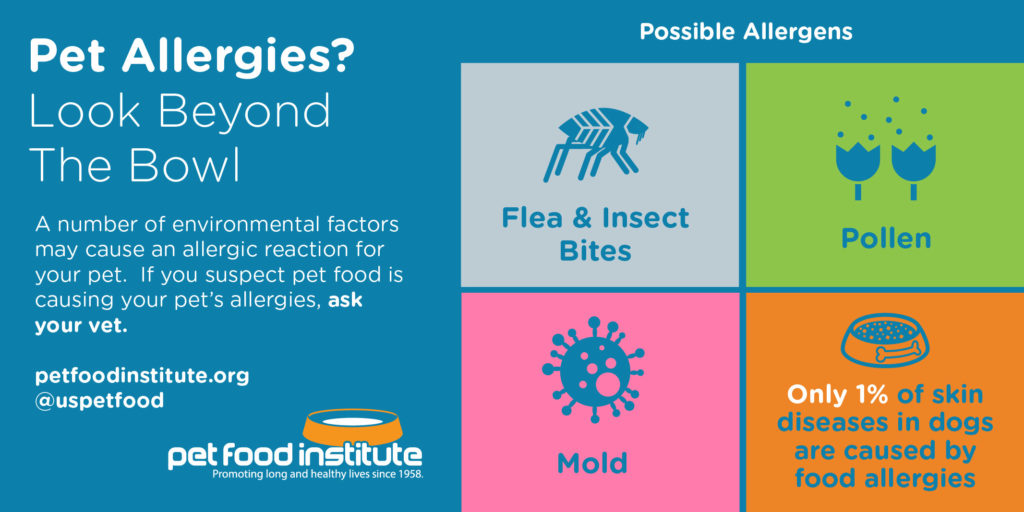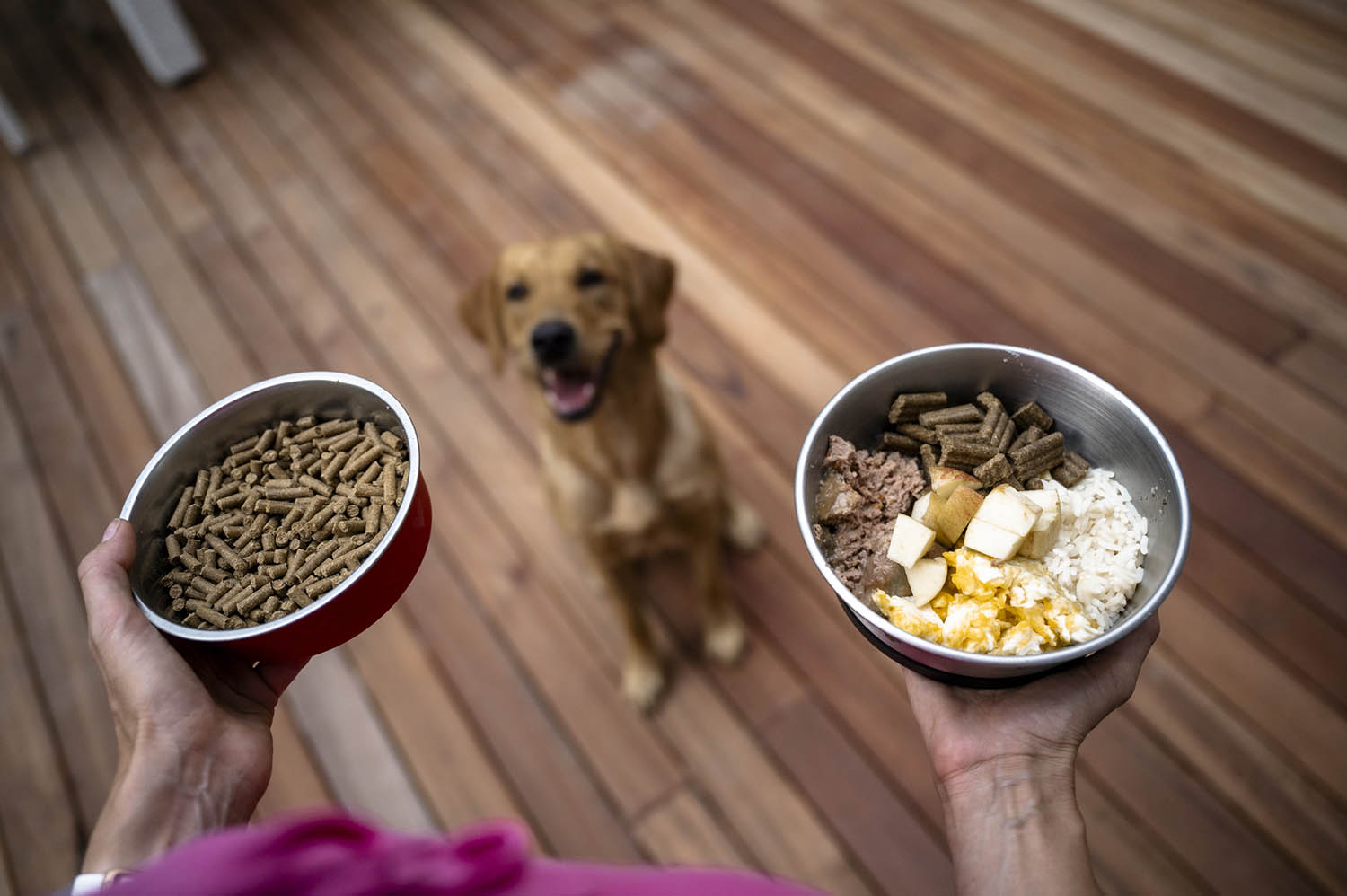Adverse reactions by dogs and cats to food are generally associated with either pet food allergies or hypersensitivities (i.e., an immunological response) or with food intolerance (non-immunological responses including food poisoning from consumption of food containing substances toxic to pets such as chocolate and onions, or an adverse reaction to the ingestion of garbage.) [1], [2], [3], [4] The exact incidence of food allergy in dogs and cats is unknown but veterinary research indicates it is infrequent. For example, diagnosed food allergy accounts for approximately 1% of all skin diseases in dogs, for those skin diseases associated with allergies, 10% of those are related to the animal’s diet. In contrast, house dust mites, pollen, molds, and flea or other insect bites are considered common causes of pet allergies.
The most common symptom of an allergic reaction in dogs and cats, including a reaction to food, is itching and scratching. Other symptoms such as scooting, skin or ear infections, odor, and/or bumps on the skin have also been observed. Flea bites are the most commonly diagnosed cause of itching for both dogs and cats, so it is important to also check for fleas if your pet is scratching itself. Diarrhea or vomiting are not common in dogs and cats with food allergy, with 10-15% of diagnosed food allergies associated with those symptoms. Pets much more frequently experience diarrhea or vomiting as the result of food intolerance.
If one does suspect food allergy, a consultation with a veterinarian will help ensure the symptoms are not due to some other root cause and allow pet lovers to treat and manage their dog or cat’s discomfort.
The best tool available to veterinarians to diagnose food allergy is an elimination diet, in which the ingredients in the current diet, such as proteins and carbohydrates, are replaced. An elimination diet will also include the removal of any additional treat or chew toys that the animal may be using. The process can take between 8-12 weeks with the pet owner and veterinarian monitoring the pet’s condition to determine if the symptoms are diminishing.

[1] Roudebush P, Guilford WG, Shanley KJ: Adverse Reactions to Food, Small Animal Clinical Nutrition, Ed 4. Topeka, KS, Mark Morris Institute, 2000, pp 431-453.
[2] Kennis R: Use of Atopic Dogs to Investigate Adverse Reactions to Food. JAVMA 221:638-640, 2002.
[3] Leistra MHG, Markwell PJ, Willemse T: Evaluation of Selected Protein-Source Diets for Management of Dogs with Adverse Reactions to Foods. JAVMA 219(10):1411-1414, 2001.
[4] A. Verlinden, M. Hesta , S. Millet & G. P.J. Janssens (2006) Food Allergy in Dogs and Cats: A Review, Critical Reviews in Food Science and Nutrition 46:3, 259-273.



